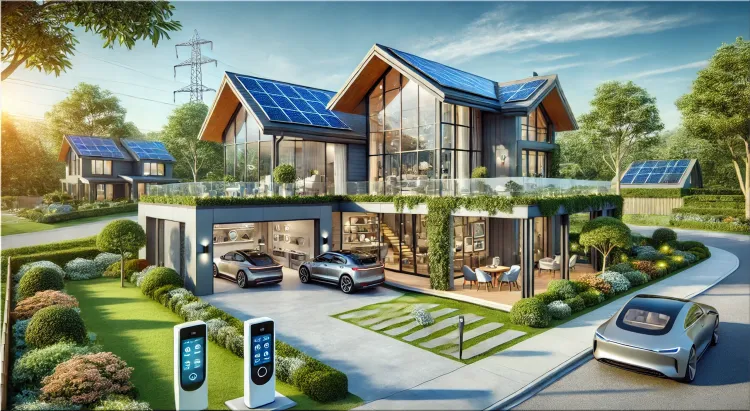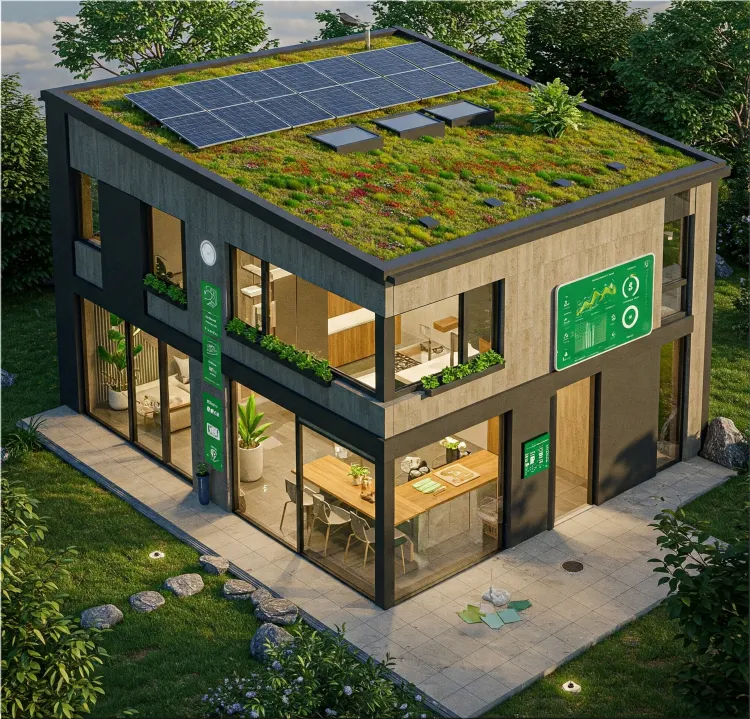Sustainable Building Practices: Creating Custom Smart Homes
Key Takeaways
- Building sustainable custom homes is an exciting and evolving field combining luxury and environmental responsibility.
- Innovations in smart home technology offer homeowners greater control and efficiency.
- Materials and design principles play a significant role in reducing environmental impact.
Introduction
Building custom homes now has an exciting twist: sustainability. This trend leverages embodying our ecological principles and increases technology, eco-friendly materials, and efficient building practices to deliver luxurious and kind homes to the planet. As our awareness of environmental effects rises, the desire for residences that embody our ecological principles is increasing.
From incorporating intelligent systems to selecting sustainable materials that reduce carbon footprints, the journey towards creating an environmentally responsible home offers unique challenges and rewarding solutions. Sustainable building practices transform how we design, construct, and even perceive our living spaces.
This article will investigate different sustainable construction methods that can turn tailored home designs into environmentally friendly works of art. Examining everything from smart home technologies to environmentally friendly building materials, we will ensure that once-in-a-lifetime homes stand at the forefront of innovation. This journey will not only enhance the environmental integrity of homes but also ensure they remain environmentally friendly.
Sustainable Building Practices
The concept of sustainable building captures the imagination of homeowners and builders alike. It highlights the importance of lowering construction's carbon footprint while enhancing energy efficiency and conserving resources in everyday home activities.
Home renovations also play a crucial role in this movement, as upgrading existing structures with sustainable materials and energy-efficient systems can significantly enhance a home's environmental impact. As climate change presents a more pressing global challenge, the construction industry must adapt by implementing innovative strategies and committing to building environmentally sustainable homes. These sustainable construction practices offer environmental benefits and significant financial advantages. Energy-efficient homes often yield lower utility bills, while eco-friendly building materials boast longer lifespans and reduced maintenance costs.
The Role of Smart Technology in Modern Homes
With ongoing technological progress transforming industries globally, home design is similarly affected. With the integration of innovative technology, contemporary homes are becoming increasingly efficient and adaptable to meet various needs. Automating lighting systems through motion sensors and optimizing energy use through intelligent thermostats are beneficial modifications that contribute significantly. However, the application of smart home technology extends well beyond that. Advanced home security systems, energy-efficient appliances, and remote control over essential functions contribute significantly to achieving homes that harmonize comfort with sustainability. With smart home technology readily accessible, the potential to curate efficient, resource-conscious homes with unparalleled convenience is constantly expanding. Discover the latest developments in smart home technology that are revolutionizing our interaction with our living spaces and promoting eco-friendly living.
Choosing Eco-Friendly Materials
The building materials used throughout construction are pivotal in the quest for sustainable living. Choosing sustainable materials that reduce ecological impact while enhancing durability is crucial.
For instance, bamboo flooring has rapidly gained popularity as a sustainable alternative to traditional hardwood. Bamboo is a rapidly growing material that renews swiftly, making it a perfect option for eco-friendly flooring.
Additionally, low-VOC paints, which emit fewer volatile organic compounds, contribute to better air quality within homes, ultimately improving occupant health. Choosing and utilizing sustainable materials have far-reaching effects that reduce environmental harm and foster healthier living environments.
Energy Efficiency Tips for Custom Homes
In the pursuit of sustainability, optimizing energy efficiency is a cornerstone of efforts to reduce environmental footprints. Implementing energy-efficient features like high-performance windows and solar panels can dramatically reduce energy consumption, creating homes that use less electricity and gas over time. Insulation improvements maintain optimal indoor temperature, further supporting sustainable living through decreased dependence on energy for heating and cooling. Along with an opportunity to reap financial benefits, energy-efficient upgrades are crucial to the larger mission of environmental sustainability. For additional insight into these endeavors, the Energy Saver website offers extensive guidelines on implementing energy-saving techniques to generate more efficient homes.
The Benefits of Water Conservation Systems
Incorporating water conservation systems is a key element of sustainable home building, especially in regions where water scarcity is prevalent. Cutting-edge technologies like rainwater collection and greywater reuse allow households to recycle water that would typically be discarded. Rainwater harvesting involves gathering and storing rainwater for purposes other than drinking, such as irrigation, flushing toilets, and doing laundry, which reduces the demand for treated municipal water.
Moreover, for irrigation, greywater recycling repurposes relatively clean wastewater from domestic use, such as sinks, showers, and washing machines. By implementing these systems, homeowners can significantly decrease their water footprint and promote the sustainable use of this precious resource.
Balancing Aesthetics with Sustainability
The assumption that an eco-friendly home necessitates sacrificing aesthetic appeal is misleading. Contemporary architectural designs emphasize the seamless integration of form and function, resulting in visually stunning spaces that maintain environmentally conscious principles. Sustainable design can merge beauty with function, providing residences that maintain aesthetic appeal while incorporating eco-friendly design methods.
Whether leveraging natural light through optimized window placements or utilizing salvaged materials for rich textures and elements, the potential for incorporating eco-friendly elements without compromising visual appeal is vast. This can shape homes into luxurious and sustainable living spaces.
Real-Life Examples of Successful Green Homes
Numerous real-life examples of sustainable homes worldwide demonstrate the practical application of eco-friendly building concepts. Finely crafted designs fuse modern architecture and environmentally responsible practices, equipping homes with features ranging from advanced energy-efficient technology installations to the meticulous use of recycled materials. Each home encapsulates a unique narrative of innovation and dedication to environmental sustainability while maintaining exceptional quality and luxury. These homes serve as inspiration for future projects and reinforce the notion that going green is not just a trend—it's a timeless commitment to the well-being of our planet.
Future Trends in Sustainable Homebuilding
The future of sustainable homebuilding is promising, with new trends reshaping the industry. Concepts like net-zero energy homes, green roofs, and enhanced recycling systems are emerging as focal points in eco-friendly home design. These innovations ensure that custom homes remain at the cutting edge of technology and environmentally responsible. By continuing to embrace cutting-edge practices and technologies, the custom home industry positions itself as a leader in sustainability. The future of sustainable building is not merely an aspiration—it's a cultivation of principles that promise to leave a lasting and positive impact on our world, paving the way for a more sustainable future for all.
- Add new comment
- 24 views























